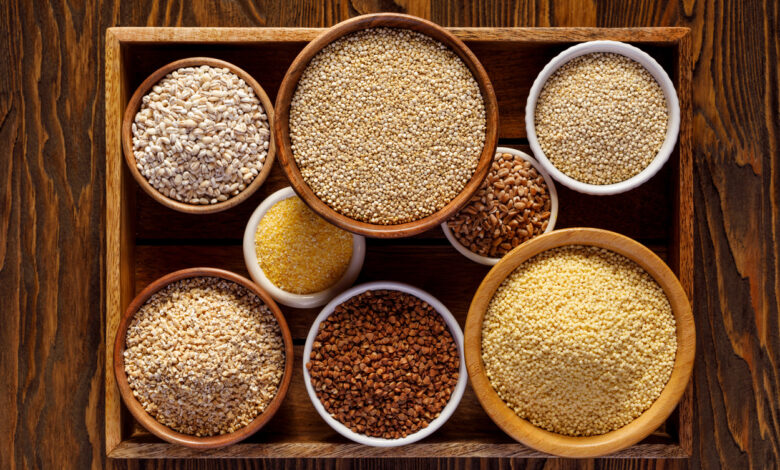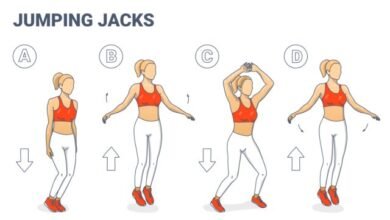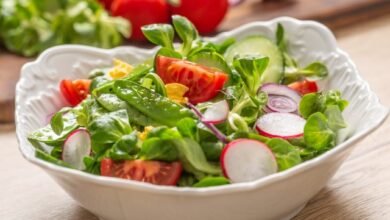Nutritious And Delicious Millets For Weight Loss: HealthifyMe

Millets, the ancient grains that have been a staple in Indian cuisine for centuries, have recently regained popularity in the modern world. These nutrient-rich grains were overlooked for a few decades as the world turned to refined grains. However, with more awareness about the importance of healthy eating, millets have made a comeback.
Research shows that millets contain essential nutrients such as fibre, minerals, protein, and minerals. Hence, healthcare experts recognise it as a fantastic food choice for those looking to lose or maintain a healthy weight. With their numerous health benefits, millets have become a staple among health-conscious individuals who want to achieve their weight loss goals.
As the world shifts towards clean eating, millet has become essential for those who want to lead a healthy lifestyle. The following sections will explore the benefits of millet for weight loss and overall health. We will also discuss the different types of millet and how to incorporate them into your diet. So, if you seek a natural and healthy way to lose weight, read on to find out how millet can help you achieve your goals.
Millets: An Overview
Millets are a group of small-seeded grasses cultivated for many years in various parts of the world, including India, China, Africa, and South America. In India, millets have been an integral part of traditional cuisine for centuries, and people commonly refer to them as “Siridhanya”.
The group of millets have various grains, including sorghum, pearl millet, foxtail millet, finger millet, and little millet, to name a few. These grains are versatile, and one can cook them in various ways. For example, one can boil, steam, or roast millet to make them suitable for consumption.
Millets are gluten-free, fibre-rich, and have a low glycemic index, making them an excellent choice for people with gluten intolerance, diabetes, and other metabolic disorders. Millets are also rich in essential vitamins and minerals, including iron, magnesium, and phosphorus, making them a nutritious addition to any diet.
Millets: Nutritional Value
As per the USDA, one hundred grams of raw millet has the following nutritional composition.
Shalika’s Incredible Weight Loss Journey – Lost 38 kgs in 12 Months
Chat with us to get started on your health and fitness journey >> https://hlfy.me/YT_Video
- Calories: 378kCal
- Protein: 11g
- Fat: 4.22g
- Carbohydrates: 72.8g
- Fibre: 8.5g
- Calcium: 8mg
- Iron: 3.01mg
- Magnesium: 114mg
- Phosphorus: 285mg
- Potassium: 195mg
- Selenium: 2.7µg
- Folate: 85µg
Millets for Weight Loss: How Do They Help?
Millets have become increasingly popular due to their various health benefits, including weight loss. Here’s a detailed look at how millets help in weight loss.
Low Glycemic Index
Research shows that millets have a low glycemic index (GI). It means millets release glucose slowly into the bloodstream, keeping you fuller for longer. High GI foods, such as refined grains and sugar, lead to a rapid spike in blood sugar levels. This results in a quick drop in energy levels, causing you to feel hungry soon after eating. However, foods with a low GI, such as millet, maintain stable blood sugar levels, which can help suppress hunger and aid in weight loss.
High Fibre Content
Millets are an excellent source of dietary fibre, which plays a crucial role in weight management. Foods rich in fibre take longer to digest, keeping you feeling full for longer and reducing your overall calorie intake. In addition, research shows that dietary fibre regulates appetite and prolongs satiety, which helps prevent overeating, ultimately leading to weight loss.
Millets contain soluble and insoluble fibre, which helps regulate bowel movements, reduce inflammation, and maintain gut health.
High Protein Content
Millets are protein-rich, with one hundred grams of raw millet containing around 11 grams of protein. Research shows that protein-rich foods can increase satiety, reduce appetite, and promote weight loss. The protein content in millet can also help preserve lean muscle mass, essential for weight loss.
Low in Fat
Millets are low in fat, making them an excellent choice for losing weight. Unlike refined grains, which are often high in fat and calories, millets provide essential nutrients without adding too many calories to your diet. Some studies also suggest that a weight-loss diet can benefit from incorporating low-fat foods.
Rich in Essential Nutrients
Millets contain essential vitamins and minerals, including iron, magnesium, phosphorus, potassium, and selenium. These nutrients help support various bodily functions, including metabolism, energy production, and weight loss.
Summary
Millets are a nutritious addition to any diet, particularly for those looking to lose weight. With a low glycemic index, high fibre and protein content, and essential vitamins and minerals, millets can help keep you feeling full, promote satiety, and aid in weight loss.
Millets Best for Weight Loss
Since millets are a rich source of fibre and antioxidants, they can be a fantastic addition to any weight-loss diet. Given below are the five best millets that can help you shed those extra kilos:
Ragi/ Finger Millet
With high calcium, iron, protein, and fibre content, ragi keeps you fuller for longer. As a result, it prevents overeating, eventually resulting in weight loss. In addition, it is gluten-free, making it a perfect option for those with gluten sensitivities.
Read More: Is Ragi Good For Weight Loss?
Bajra/ Pearl Millet
Bajra is one of the best grain choices for weight loss, as it contains very few calories and high fibre, which helps keep you full without increasing your daily calorie count.
Read More: Is Bajra Good For Weight Loss?
Jowar/Sorghum
Jowar has high vitamin B content, boosting metabolism and improving bone and heart health. In addition, including jowar in your diet can aid in weight management.
Foxtail millet/Kangni
Rich in complex carbohydrates, foxtail millet is a great food option for people trying to lose weight. It is also gluten-free.
Rajgeera/Amaranth
High in protein and fibre, Rajgeera helps build muscles and maintain good gut health. Adding Rajgeera to your diet can help you with weight loss.
One can easily incorporate the above millets into their diet as porridge, khichdi, salads, and more. Including these millets in your diet can not only help with weight loss but provide various other health benefits too. So, start including these healthy millets in your diet and witness the magic yourself.
Summary
Millets are a great addition to a weight-loss diet as they are high in fibre and antioxidants. Incorporating millets such as Ragi, Bajra, Jowar, Foxtail Millet, and Rajgeera into your diet can help keep you satiated without increasing your daily calorie intake, boost metabolism, and aid in weight management. Millets can be consumed in various forms like porridge, khichdi, salads, and more, making it easy to incorporate into your diet. In addition to weight loss, millets provide numerous other health benefits, making them a must-add to your diet.
Why Millets Over Other Grains?
Rice and Millets
Regarding weight loss foods, the often debated discussion is the choice between brown rice and millets. While brown rice is high in carbohydrates, millets have more protein and fats. In addition, studies have shown that the iron content in millets contributes most of the Recommended Daily Allowance (RDA) per 100gm, making it a healthier choice.
One must also remember that cutting out rice entirely from your diet is not recommended. While you can use millets more often, having both grains in their proper amounts for weight loss is better.
Read More: Is Rice Good For Weight Loss?
Quinoa and Millets
When choosing between quinoa and millet, both are healthy with various health benefits.
Quinoa is a super grain, but it can be expensive. Hence, it may not fit into everyone’s dietary budget. On the other hand, millets are gluten-free, cost-effective, and also aid in weight loss.
But why choose millet over other grains? Millets have a low glycemic index, which releases glucose slowly into the bloodstream, keeping you fuller for extended periods. That makes them a fantastic option for weight loss.
Summary
A mindfully planned diet is the key to preventing lifestyle diseases and staying fit. While people often pit rice and millet against each other, including both in your meals and consuming them properly for a healthy and balanced diet is essential.
Ways to Use Millets for Weight Loss
Millets are versatile grains that can be used in many ways to make your meals healthier. Below are some easy and delicious ways to include millet in your diet:
- Flour: Millet flour can replace wheat or rice flour to make chapatis, bhakri, pancakes, chilla, biscuits, and bread. One can also use it as a thickening agent or stabiliser for gravies or sauces.
- Semolina/Rawa: Millets can replace rawa in upmas,h andwa, appam, dosas, idlis, and khichdi or pongal. Different millet vermicelli options are also available nowadays.
- Rice/Pulav: You can cook most whole millet just like rice. Add colourful veggies and make a pulav.
- Khichdi or Pongal: Replace rice with millet, and it will not make a big difference in your khichdi’s taste. However, it can make a significant difference in the nutritional profile. Some examples are bajra khichdi, jowar khichdi, or foxtail millet khichdi, Kodo millet bisi bele bath, and sweet or salty pongal.
- Salads: Make a variety of salads along with an array of vegetables to increase their nutritional value. Just a dash of lime, and you are in for a tasty treat.
- Desserts: You can make a variety of ragi, jowar or bajra porridge. You can also use milllets to make kheer or halwa. .
- Amaranth/Rajgeera: Rajgeera is extensively used during Navratri to replace rice/wheat dishes—for instance, amaranth paratha/amaranth chilla.
Including millet in your diet can help you lose weight by increasing fibre intake and providing essential nutrients. Try these easy and delicious ways to add millet to your meals and enjoy the benefits of a healthier diet.
Precaution
Although millets have many health advantages, studies show they also include antinutrients, which prevent or restrict your body from absorbing other nutrients and may cause deficiencies. One of these substances, phytic acid, prevents the absorption of potassium, calcium, iron, zinc, and magnesium. A balanced diet, however, reduces the likelihood of negative impacts.
Soaking millet in water, draining, and rinsing it before cooking can considerably reduce the antinutrient content of millet. Additionally, sprouting lowers the antinutrient content.
Place the soaked millet in a glass jar and cover it with a cloth fastened with a rubber band to do this. Every 8 to 12 hours, tip the jar upside down and rinse and drain the millet. After 2-3 days, tiny sprouts will start to form. Drain the sprouts, then directly eat them.
Studies have shown that eating millet every day can lead to thyroid issues. Hence, limiting their consumption to three or four times a week is best.
Summary
Millet is a nutritious grain that has gained popularity due to its many health benefits. However, millet also contains antinutrients, such as phytic acid. As a result, it can interfere with nutrient absorption. To minimise the adverse effects of antinutrients, one must soak or sprout millet before cooking. While millet can be a part of a healthy daily diet, limiting consumption to three or four times a week is best to avoid potential thyroid issues.
HealthifyMe Suggestions
You can have a sweet dish also made out of millet. Traditional Indian sweets often contain unrefined jaggery and millet flour. The variety of baked goods is endless, from chocolate fudge cake to banana and raisin cake bread. Millet can also help make summer salads with walnuts, beets, broccoli, and split peas. It releases sugar slowly in the body and is even suitable for people with diabetes.
The Final Word
Millets are an excellent choice for those looking to maintain a healthy lifestyle and lose weight. With their low glycemic index, high fibre and protein content, and essential vitamins and minerals, millets can help regulate blood sugar levels, curb hunger, promote satiety, and aid in weight loss. In addition, millets are versatile, gluten-free, and one can cook them in various ways. Moreover, they are a nutritious addition to any diet, particularly for those with gluten intolerance, diabetes, and other metabolic disorders. Therefore, incorporating millet into your diet can be a natural and healthy way to achieve your weight loss goals while enjoying delicious and nutritious food.
Disclaimer: The purpose of this article is just to disperse knowledge and raise awareness. It does not intend to replace medical advice from professionals. For further information, please contact our certified nutritionists Here.
Frequently Asked Questions (FAQs)
Q: What are millets, and how can they help with weight loss?
A: Millets are small-seeded grasses cultivated for thousands of years which have recently regained popularity in the health-conscious world. They are gluten-free, fibre-rich, and have a low glycemic index, making them an excellent choice for people with gluten intolerance, diabetes, and other metabolic disorders. Millets are also rich in essential vitamins and minerals, including iron, magnesium, and phosphorus, making them a nutritious addition to any diet. In addition, millets can help with weight loss due to their low glycemic index, high fibre content, high protein content, and low-fat content. These properties can help regulate blood sugar levels, reduce appetite, maintain lean muscle mass, and reduce overall calorie intake.
Q: What are the best types of millet for weight loss?
A: All millets are suitable for weight loss, but some of the best types are foxtail millet, finger millet, and pearl millet. These millets have a low glycemic index, high protein, and high fibre content, making them an excellent choice for those seeking to lose weight.
Q: How do I prepare millet for weight loss?
A: One can prepare millet in various ways, such as boiling, steaming, or roasting. To prepare millet for weight loss, one can cook them in water or low-fat milk and serve them with vegetables or lean protein sources such as grilled chicken or fish.
Q: Are millets high in calories or carbohydrates?
A: Millets are low in fat but high in carbohydrates, with one hundred grams of raw millet containing approximately 72.8 grams of carbohydrates and 378 kcal. However, millets have a low glycemic index, high fibre, and high protein content, which can help regulate blood sugar levels, reduce appetite, and maintain lean muscle mass, making them a good choice for weight loss.
Q: Can millets be consumed on a daily basis for weight loss?
A: Although millets are a nutritious addition to any diet, one must consume them only a 4-5 times a week. That is because daily consumption may lead to thyroid issues.
Q: Can millets help with managing blood sugar levels?
A: Yes, millets can help with managing blood sugar levels. Millets have a low glycemic index, which means they release glucose slowly into the bloodstream, keeping you fuller for longer and helping to maintain stable blood sugar levels. This property can benefit people with diabetes or those at risk of developing diabetes.
Q: Are there any side effects of consuming millet for weight loss?
A: Millets are generally safe for consumption, and there are no reported side effects of consuming millets for weight loss. However, some people may be allergic to millets, and consuming millets in excessive quantities may lead to gastrointestinal discomfort.
Q: Can millet be used as a replacement for rice?
A: Yes, one can use millet as a replacement for rice. Millets have a similar texture to rice, and one can use them in various dishes, such as biryanis, pulao, and salads.
Q: How long does it take to see results from consuming millet for weight loss?
A: The time taken to see results from consuming millet for weight loss varies from person to person and depends on various factors such as dietary habits, physical activity levels, and overall health. However, consuming millet as part of a balanced diet and active lifestyle can lead to weight loss.
Q: Is it necessary to follow a specific diet plan while consuming millet for weight loss?
A: No, following a specific diet plan while consuming millet for weight loss is not necessary. Millets are a nutritious addition to any diet, particularly for those looking to lose weight. They have a low glycemic index, high fibre and protein content, and essential vitamins and minerals that help keep one feeling full, promote satiety, and aid in weight loss. However, one should keep the overall calorie intake in mind and eat a balanced diet while consuming millet.
Research Sources
1. Hassan ZM, Sebola NA, Mabelebele M. The nutritional use of millet grain for food and feed: a review. Agric Food Secur. 2021;10(1):16. DoI: 10.1186/s40066-020-00282-6. Epub 2021 Mar 29. PMID: 33815778; PMCID: PMC8005370.
https://www.ncbi.nlm.nih.gov/pmc/articles/PMC8005370/
2. The U S Department of Agriculture
https://fdc.nal.usda.gov/fdc-app.html#/food-details/169702/nutrients
3. Anitha S, Kane-Potaka J, Tsusaka TW, Botha R, Rajendran A, Givens DI, Parasannanavar DJ, Subramaniam K, Prasad KDV, Vetriventhan M, Bhandari RK. A Systematic Review and Meta-Analysis of the Potential of Millets for Managing and Reducing the Risk of Developing Diabetes Mellitus. Front Nutr. 2021 Jul 28;8:687428. doi: 10.3389/fnut.2021.687428. PMID: 34395493; PMCID: PMC8355360.
https://pubmed.ncbi.nlm.nih.gov/34395493/
4. Akhlaghi M. The role of dietary fibres in regulating appetite, an overview of mechanisms and weight consequences. Crit Rev Food Sci Nutr. 2022 Oct 4:1-12. DoI: 10.1080/10408398.2022.2130160. Epub ahead of print. PMID: 36193993.
5. Moon J, Koh G. Clinical Evidence and Mechanisms of High-Protein Diet-Induced Weight Loss. J Obes Metab Syndr. 2020 Sep 30;29(3):166-173. doi: 10.7570/jomes20028. PMID: 32699189; PMCID: PMC7539343.
https://www.ncbi.nlm.nih.gov/pmc/articles/PMC7539343/
6. University of East Anglia. “Low-fat diet helps drop pounds, study suggests.” ScienceDaily. ScienceDaily, 6 December 2012. <www.sciencedaily.com/releases/2012/12/121206203247.htm>.
https://www.sciencedaily.com/releases/2012/12/121206203247.htm
7. Anitha S, Kane-Potaka J, Botha R, Givens DI, Sulaiman NLB, Upadhyay S, Vetriventhan M, Tsusaka TW, Parasannanavar DJ, Longvah T, Rajendran A, Subramaniam K, Bhandari RK. Millets Can Have a Major Impact on Improving Iron Status, Hemoglobin Level, and Reducing Iron Deficiency Anemia-A Systematic Review and Meta-Analysis. Front Nutr. 2021 Oct 14;8:725529. doi: 10.3389/fnut.2021.725529. PMID: 34722606; PMCID: PMC8551390.
https://www.ncbi.nlm.nih.gov/pmc/articles/PMC8551390/
8. Boncompagni E, Orozco-Arroyo G, Cominelli E, Gangashetty PI, Grando S, Kwaku Zu TT, Daminati MG, Nielsen E, Sparvoli F. Antinutritional factors in pearl millet grains: Phytate and goitrogens content variability and molecular characterisation of genes involved in their pathways. PLoS One. 2018 Jun 1;13(6):e0198394. DoI: 10.1371/journal.pone.0198394. PMID: 29856884; PMCID: PMC5983567.
https://www.ncbi.nlm.nih.gov/pmc/articles/PMC5983567/
9. Babiker A, Alawi A, Al Atawi M, Al Alwan I. The role of micronutrients in thyroid dysfunction. Sudan J Paediatr. 2020;20(1):13-19. doi: 10.24911/SJP.106-1587138942. PMID: 32528196; PMCID: PMC7282437.




